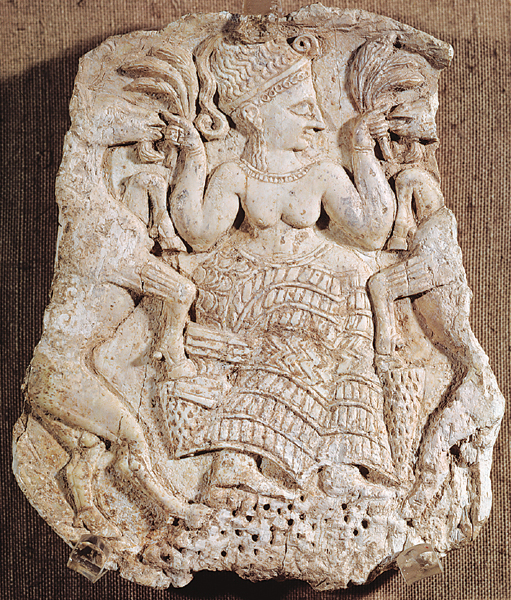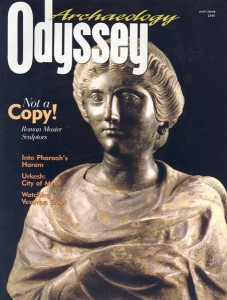Ivory Pyxis
5 1/2 inches long
Louvre Museum

In 1929 French archaeologist Claude Schaeffer began uncovering Late Bronze Age Ugarit, modern Ras Shamra on the Mediterranean coast of northern Syria. Outside the ancient city, among the limestone cliffs of the bay of Minet el Beida (White Harbor), Schaeffer soon discovered a series of tombs containing astounding grave goods: Mycenaean vases, faience pottery, Egyptian alabaster vessels, ostrich egg shells, terracotta and bronze statues.
Among the most beautiful of Schaeffer’s finds at the necropolis is this delicate, 13th-century B.C. ivory, now in the Louvre. Only five-and-a-half inches in diameter and carved from an elephant’s tusk, it once formed the lid of a cosmetic box, or pyxis.
The pyxis shows a simple scene: An elegant, bare-breasted woman seems to be feeding grain to a pair of leaping goats. The various elements in this carving, however, derive from all over the Mediterranean: Egypt, Anatolia, the Aegean and Syria. The woman’s single forelock and elaborate curls, for example, resemble hair styles of priestesses in frescoes from Crete, Mycenaean Greece and Thera (modern Santorini). Her naked breasts and prominent nipples, on the other hand, are Levantine in style—and the highly symmetrical arrangement of the lid’s figures is reminiscent of Near Eastern cylinder seals.
Already a library member? Log in here.
Institution user? Log in with your IP address.

